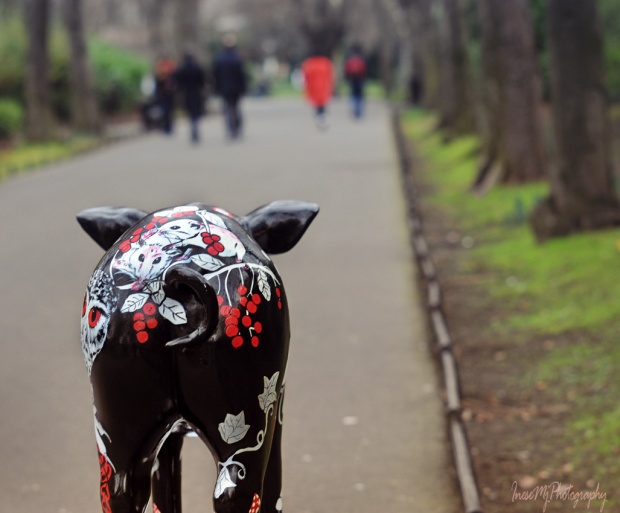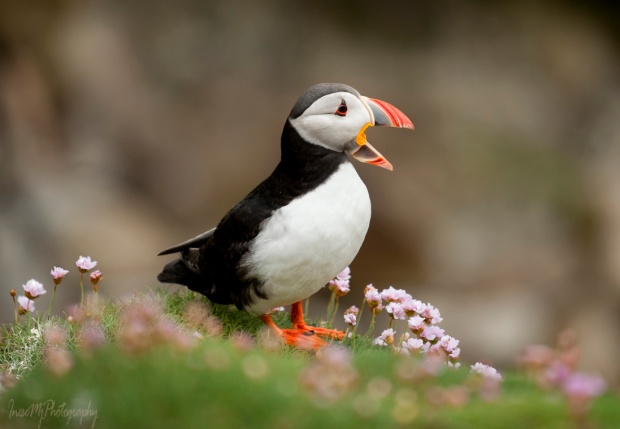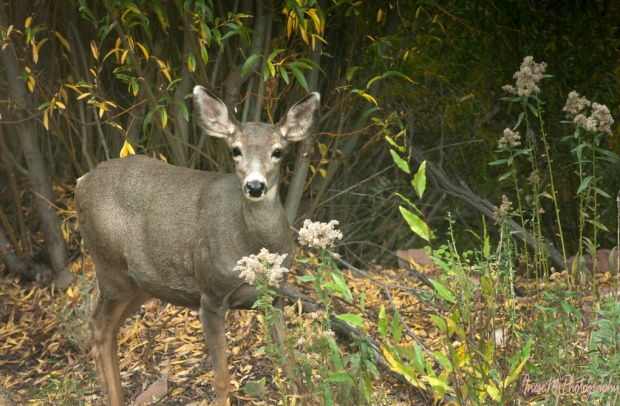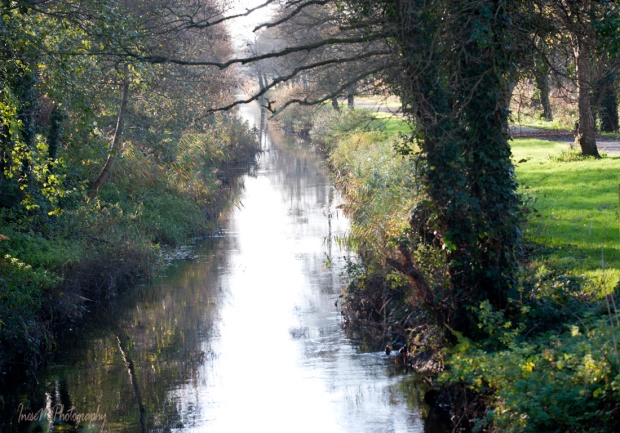
If you are looking for a unique place to stay in Waterford, you might think about the Waterford Castle hotel and Golf Club on the Little Island. I borrowed this aerial view image from the Golf Open Competitions website – you can also click on the image to view the page. It is a very good site, covering all the golf events in the country.
I put three marks on the map: the ferry point, the castle, and the guide beacon – a tower standing on the sand spit. We will walk the perimeter of the island – it will only take an hour of brisk walk and two blog posts 🙂

This is a Google map with the same marks.

Little Island is located on River Suir just 2 miles from the estuary, and encircled by the Queens and Kings Channels. The strategic position of the island has always attracted settlers. The island changed hands several times. First came the monks, then the Vikings, and finally the Normans. The FitzGerald family being the cousins of Strongbow were awarded this land for their part in the Norman Invasion. They built a Norman keep around which the rest of the current castle was built over the centuries. The island was connected to the mainland by wooden boats, but the residents would also use the stepping stones to cross the north channel ( then called the Ford) to attend the mass. Obviously, the channel wasn’t navigable as there was a depth of only two feet at low tide. In the first quarter of the 19th century, the channel was cleaned and deepened.
The FitzGeralds owned the ‘Lytle Yland’ for almost eight centuries. The land was farmed by the lord and rented out to tenants to be used as pasture, and to grow crops. Pay and conditions were good. By the 20th century, the island developed into the self contained community. If you are interested, here is a link to an absolutely fascinating article by Tom Dooley on the history of the Little Island, found on the page #49.
The Little Island was first leased and sold in 1958. After that it changed owners another couple of times. The castle was turned into hotel in 1988, and 48 three-and four-bedroom garden lodges were added in 2007. I won’t share any reviews. I only help you discover the island and have a pleasant time walking around. Isolation and ambiance of the island are worth the money – you can also book a whole lodge for the price of a room in the castle if you travel with your family and want to save a little. By the way, they say you might see ghosts in the castle and fields. Is it why I never met another walker in the remote part of the island?
‘Mary Fitzgerald‘ ferry takes us across the King’s Channel which is the old natural bed of the river Suir. One-way winding road goes up the hill to the castle car park through the green canopy full of wildlife. We won’t see the castle until the last minute – it is hidden in the high trees.
We drive past grazing deer.


This one is very inquisitive.

A young song thrush tries his voice.

A red squirrel with a white tail and white ear tufts is digging in the grass at the side of the road.


Suddenly the main entrance of the castle appears on the left.

When we are done with our walk, come in and ask for a cup of tea and a cake. Even if you are not a resident and didn’t make a reservation, there is a good chance you will be served.

You can walk around the castle and count the cute gargoyles.

A tiny garden offers tranquility and mystery.

To follow our plan, we take a trail that starts at the car park, and walk through the patch of trees. Some lucky residents have seen badgers and hedgehogs around the castle, but this happens early in the morning or late at night. We just see more deer 🙂


A grey squirrel resides in this part of the island – there is enough food for both species.

These pictures were taken in August – the Butterfly Month in Ireland.
Our path reaches the river. There is a patch of thistles, a favorite spot for butterflies. Let’s have a look.
This is a brand new Peacock butterfly, the most spectacular of the Irish butterflies. It will overwinter in a tree trunk or another dark place, and resume activity in March.

Small tortoiseshell is a very common butterfly also known for its hibernating habits. Every February-March I find one or more in my kitchen where they overwinter somewhere behind the cabinets.

Meadow brown female is not as hairy as her colorful cousins.

This is Red admiral, a beautiful migrant from Southern Europe.

Red admirals are not shy. One lands on my shoulder, stays there for a couple of minutes and then returns to the thistles.



Butterflies have a variety of predators. This one has been in a fight for his life 🙂

After admiring the butterflies, we walk west towards the Islands Edge. Little Island is a nesting place for herons, and you will see many of them at the water edge and in the fields.

A group of Godwits inspect the muddy riverbed.

Various waders can be seen picking lugworms : Curlew, Godwit and two almost identical Lapwings.



We walk past the castle and enter a wooded area.

We walk to the point where the path merges with the road that brought us to the castle. As we are not leaving the island yet, let’s walk back to the castle, have a cup of tea by the fireplace in the Great Hall, and get ready for our next adventure..


Here are two links to my favorite websites where you can read more about history and sailing specifics of the Little Island.
https://eoceanic.com/sailing/harbours/27/little_island
https://irishwaterwayshistory.com/tag/little-island/
We resume our walk in two weeks
 Have a wonderful weekend!
Have a wonderful weekend!

 Have a happy week!
Have a happy week!





















































 Have a wonderful weekend!
Have a wonderful weekend!








































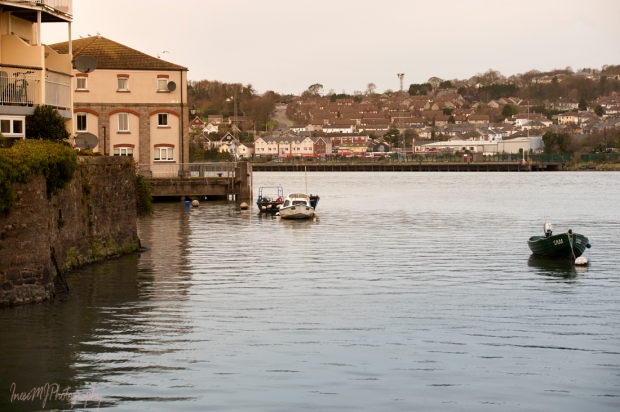








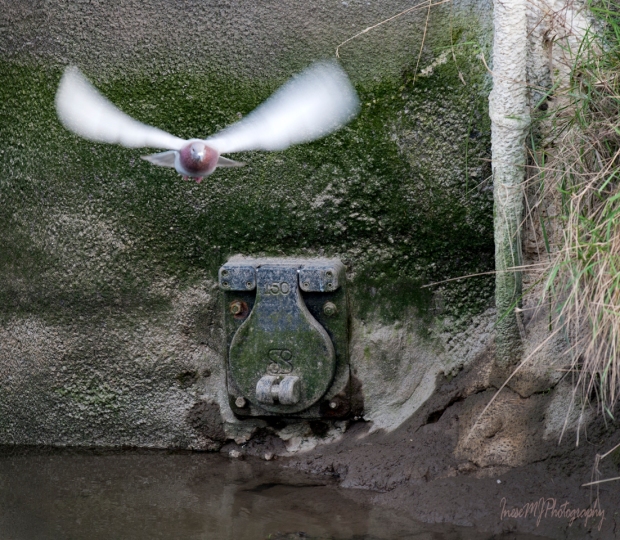
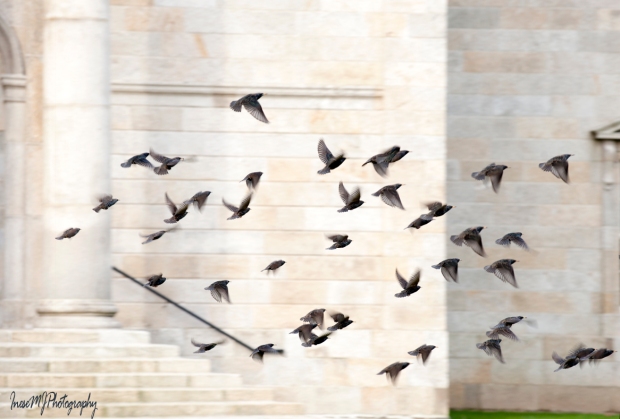







 Have a wonderful weekend!
Have a wonderful weekend!